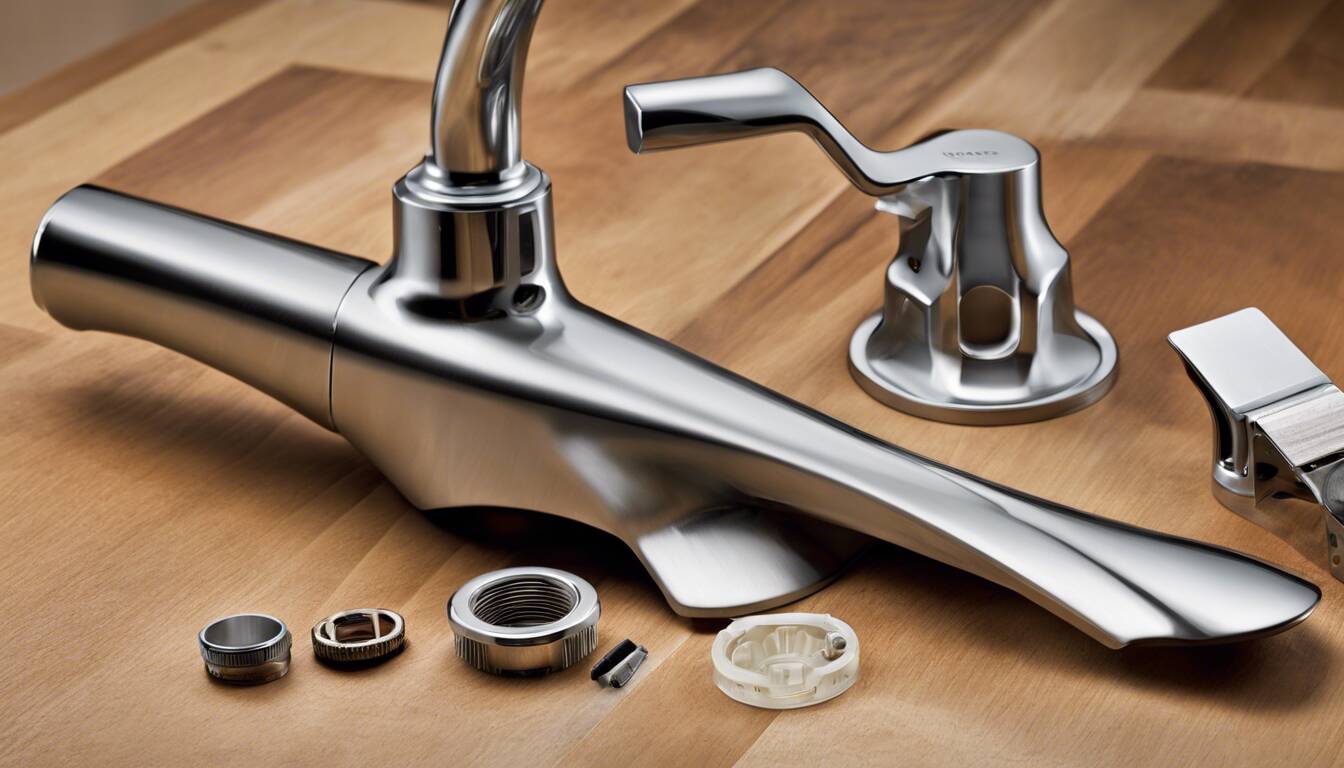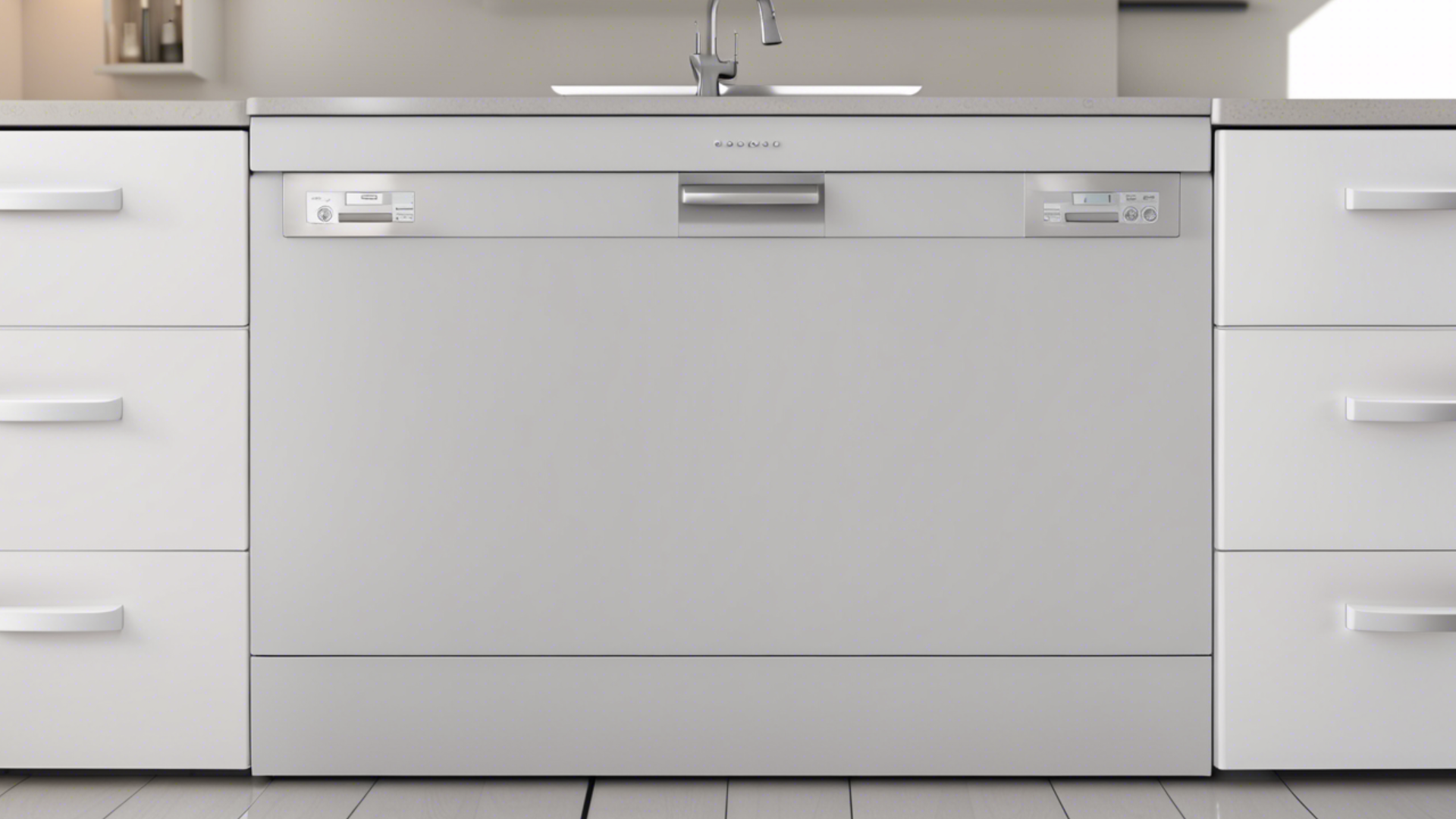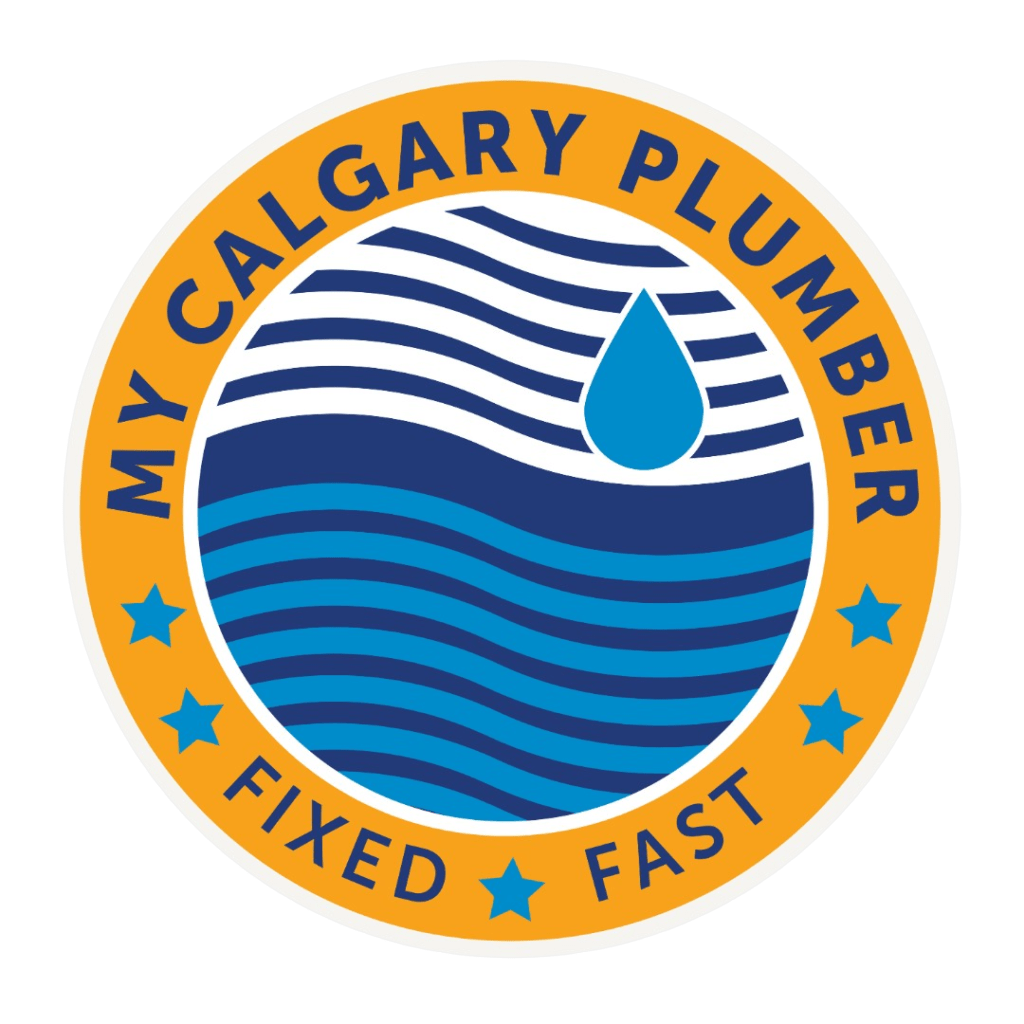A slow-draining kitchen sink can turn meal prep into a frustrating ordeal, delaying cleanup when convenience matters most. Before you reach for the phone to call a plumber, understanding what’s causing this issue could save both time and money. From food scraps to grease build-up or soap scum lining your pipes, many factors may be at play—each requiring specific solutions.
We’ll dive into identifying these common culprits step-by-step to ensure you tackle the most accessible areas first. From surface checks around the drain to examining hidden spots like the P-trap beneath your sink—where unsuspected blockages often lurk—we’ve gathered all our expertise to guide you through resolving this annoying problem efficiently on your own.
A potential solution to a slow-draining kitchen sink is to check for clogs in the drain and the P-trap. You can use a mixture of baking soda and vinegar followed by hot water to attempt to clear minor blockages. If the issue persists, it might be necessary to utilize a plumber’s snake or seek professional assistance from a licensed plumber.
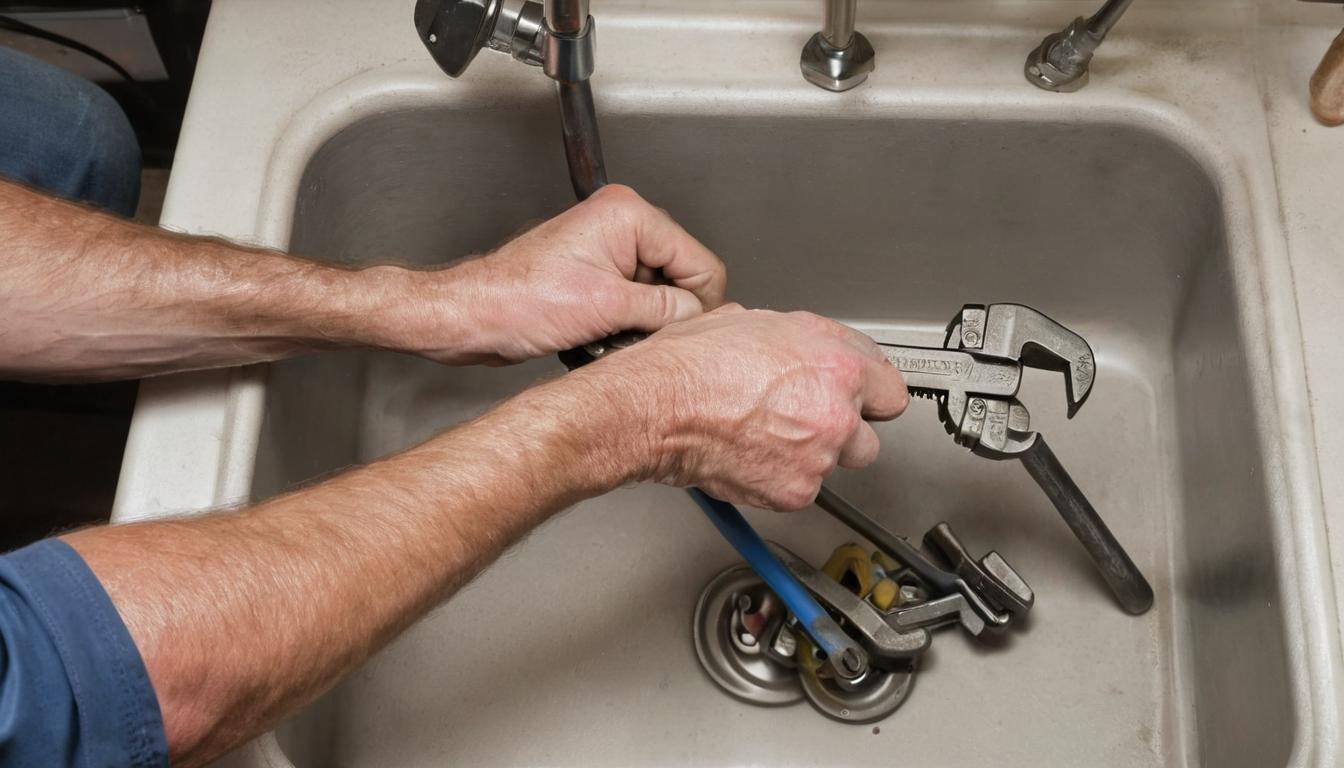
Identifying the Source of the Problem
When it comes to a slow-draining kitchen sink, the cause can be pretty sneaky. It’s like an investigation – you start with the obvious suspects and then work your way through more complex scenarios. The first thing to do is to clear away anything obvious, like food scraps or gunk stuck in the sink. Before you go on a full-blown plumbing adventure, sometimes it can be as easy as removing visible debris from the drain.
If that doesn’t do the trick, see if there’s something caught in the P-trap. This u-shaped pipe under your sink collects debris and might just need a good cleanout. Remember to put a bucket under it before you start unscrewing it! If we’re still struggling, we’ve got to venture further down the rabbit hole—err, plumbing system. This will take some serious sleuthing.
What could be blocking your drain? This is where things get interesting. It might be grime and gunk buildup in your pipes deeper down which needs a thorough inspection with a flashlight. If things get really tricky, you may need to employ a small camera to pinpoint those hard-to-reach areas in your plumbing system.
Just like diagnosing an illness, starting with the most accessible areas is essential. Starting with the most accessible areas is crucial for proper diagnosis. It’s like when you’re not feeling well – you don’t immediately jump to obscure illnesses but instead focus on the common cold first. Treat this problem like a gradual process rather than jumping straight to complex solutions.
It’s like peeling an onion – start with the outer layers and work your way in. Sometimes you’ll find that all you need is a little surface-level cleaning, but in more complex cases, understanding what’s hidden becomes crucial.
By following a systematic approach and starting with the most obvious culprits first, you can efficiently identify and resolve the source of your slow-draining kitchen sink. Now that we’ve pinpointed potential issues, let’s proceed to tackle them head-on for a sparkling clean and free-flowing sink.
With a strategy in place for uncovering pipe blockages, we’re now prepared to dive into recognizing the telltale signs of impending plumbing trouble—a critical step towards preventing major clogging crises.
Common Symptoms of a Clogged Sink
A slowly draining kitchen sink may not only be annoying but can also be the result of a clog somewhere in the drainage system. But how do you know if it’s really a clog causing the issue? Look out for these common symptoms:
Gurgling Sounds
You might hear strange gurgling sounds coming from your sink when you run water down the drain. This could be a sign that there’s trapped air within the pipes, which is trying to force its way past a clog.
Water Pooling Around the Drain
If you often notice water pooling around the drain after using your sink, this is another sign of a potential clog. This happens because the water can’t flow smoothly through the pipes due to an obstruction.
Slow Drainage
When water takes longer than usual to empty from the sink, especially after running the dishwasher or using the garbage disposal, it’s likely due to a partial clog in the pipes. The clog restricts the flow of water, leading to slower drainage.
Unpleasant Odors
Sometimes, you might notice unpleasant smells coming from the drain. This is typically caused by food particles and other debris trapped in the pipes, leading to bacterial growth and bad odors emanating from the sink.
Backed-Up Water
Another clear indication of a clogged sink is water backing up into the sink when using other appliances like a dishwasher or garbage disposal. This happens because the water has nowhere else to go due to an obstruction in the drainage system.
Recognizing these symptoms early on is crucial in addressing the issue promptly and preventing further complications. It’s important to understand these signals and avoid dismissing them as minor inconveniences, as they can potentially lead to more significant problems if left unattended.
Understanding these common signs of a clogged kitchen sink equips you to take timely action to resolve the issue and prevent situations from escalating. By being mindful of these symptoms and addressing them as soon as they arise, you can effectively avoid further plumbing issues.
Home Remedies for Clearing Drains
If your sink is draining slowly or gets clogged, there’s no need to worry just yet. Many easy and effective ways can help with this common issue using items you likely already have at home, helping to dissolve minor blockages and keep your sink flowing smoothly.
Baking Soda and Vinegar
Think of this method as a fizzy science experiment that works wonders for drain cleaning. The reaction of baking soda and vinegar creates a fizz that can dislodge gunk and grime from the walls of your pipes. It’s quite simple to use:
- Pour half a cup of baking soda into the drain
- Follow by pouring half a cup of vinegar down it
- Let the mixture fizz and work for about 15 minutes
- After that, flush the drain with hot water to wash away the loosened debris
This method is most effective on minor blockages caused by food particles and soap scum buildup.
Boiling Water
Boiling water is surprisingly effective for dealing with minor grease and soap scum blockages. The procedure is straightforward:
- Boil a kettle full of water
- Slowly pour the boiling water down the kitchen sink in stages, pausing for a few seconds between each pour.
The hot water can effectively melt away fats and greasy build-ups causing slow drainage. However, remember not to use boiling water if you have PVC pipes, as it could damage them.
Salt and Baking Soda
Salt mixed with baking soda is another great combination for breaking up clogs. This is how you can use these pantry staples to clean your drain:
- Mix half a cup of table salt with half a cup of baking soda in a bowl
- Pour the mixture down the drain
- Follow it up by pouring boiling water slowly down the drain
- Allow the mixture to sit undisturbed overnight
- In the morning, flush the drain with hot water
The abrasive action of salt and baking soda can effectively dislodge greasy residues and minor blockages, leaving your sink smelling fresh and draining freely.
With these simple home remedies, you’ll be surprised at how effectively you can decongest your kitchen sink without having to resort to harsh chemicals or professional assistance. So go ahead, give these methods a try next time your sink starts acting up!
In your quest for an efficiently functioning kitchen, experimentation is key when addressing persistent drainage issues. Now, let’s move forward to navigate a realm where hardware interventions are necessary—the uncharted waters of hardware fixes for persistent problems.
Hardware Fixes for Persistent Problems
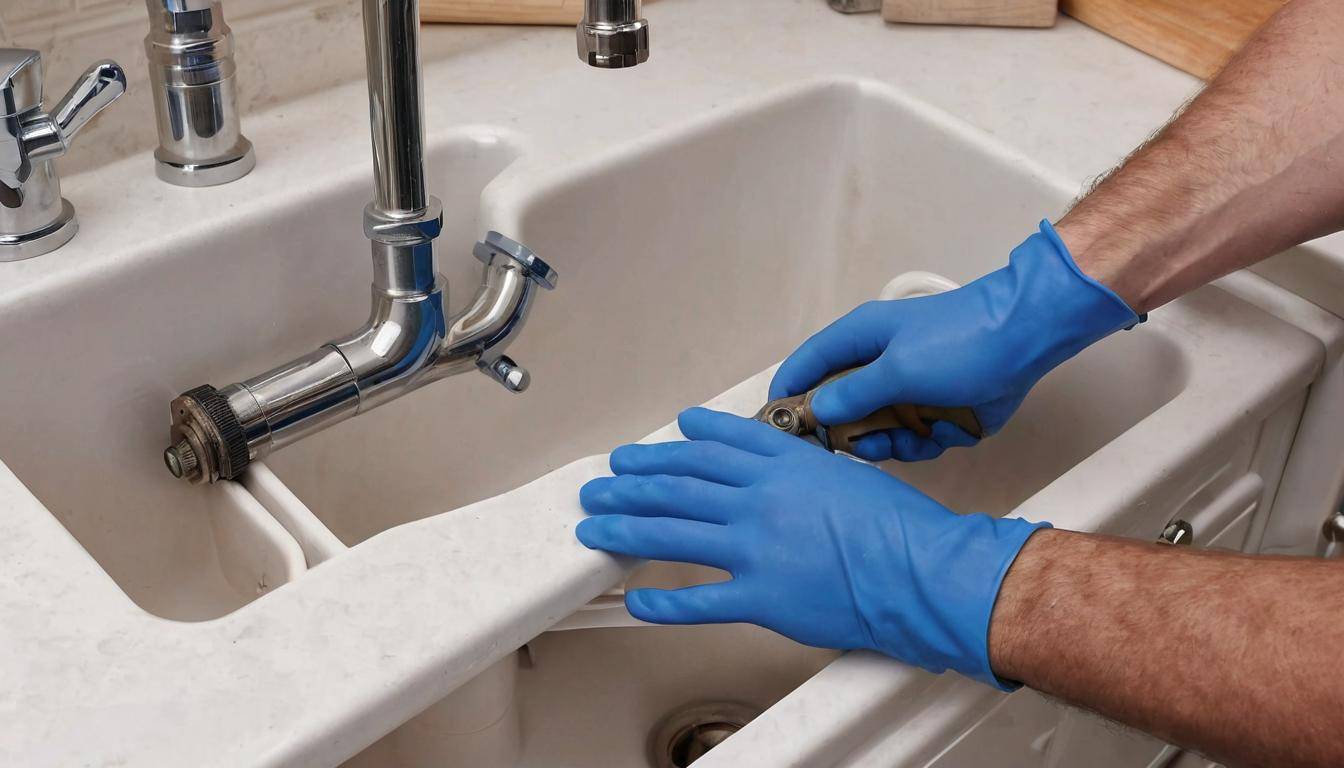
When dealing with stubborn drain clogs that just won’t budge, consider employing some additional hardware. Using commonly available tools around your home can often work wonders for addressing these persistent plumbing issues. Now, let’s dive into some tried-and-tested hardware fixes you can employ to tackle these drainage issues.
Sink Plunger
The sink plunger is an essential tool for dealing with mild to moderate blockages in your kitchen sink. This trusty tool uses the power of hydraulic pressure to forcefully dislodge the obstruction. For effective use, ensure there is enough water in the sink to cover the plunger lip and then plunge vigorously. The pressure created by this action can help to dislodge food particles, grease, or small blockages, allowing them to flow downstream and clear the drain.
Drain Snake
For more stubborn clogs lodged deeper within the pipe, a drain snake or auger can be highly effective. This versatile tool is designed to reach farther down the pipe and dislodge blockages that are not responsive to other methods. To use a drain snake, insert it into the pipe and crank it until you encounter the blockage. Once you reach the obstruction, twist and pull out the debris causing the clog. This method allows you to physically remove larger or more stubborn obstructions that may be too difficult for a plunger to handle alone.
P-Trap Cleaning
Sometimes, a persistent clog originates within the P-trap—the curved section of pipe located beneath your kitchen sink. To clean this part of your plumbing, you will need to remove the P-trap by loosening the nuts on either end. Ensure a bucket is underneath to catch any water or debris that falls out during this process. Once removed, thoroughly clean the P-trap of accumulated debris before reassembling it back in place. This cleaning process can effectively address clogs caused by built-up food particles, grease, and other residues within this section of your plumbing.
By employing these hardware fixes, you can overcome persistent drainage issues in your kitchen sink and ensure smooth, unobstructed water flow once again.
Remember though, if these DIY methods don’t solve the issue, it’s time to call in a professional plumber who can identify and address more complex plumbing problems effectively.
Having explored some useful DIY methods for handling stubborn sink clogs, let’s now turn our attention to recognizing when it’s best to engage a professional to resolve persistent plumbing issues.
When to Call a Professional
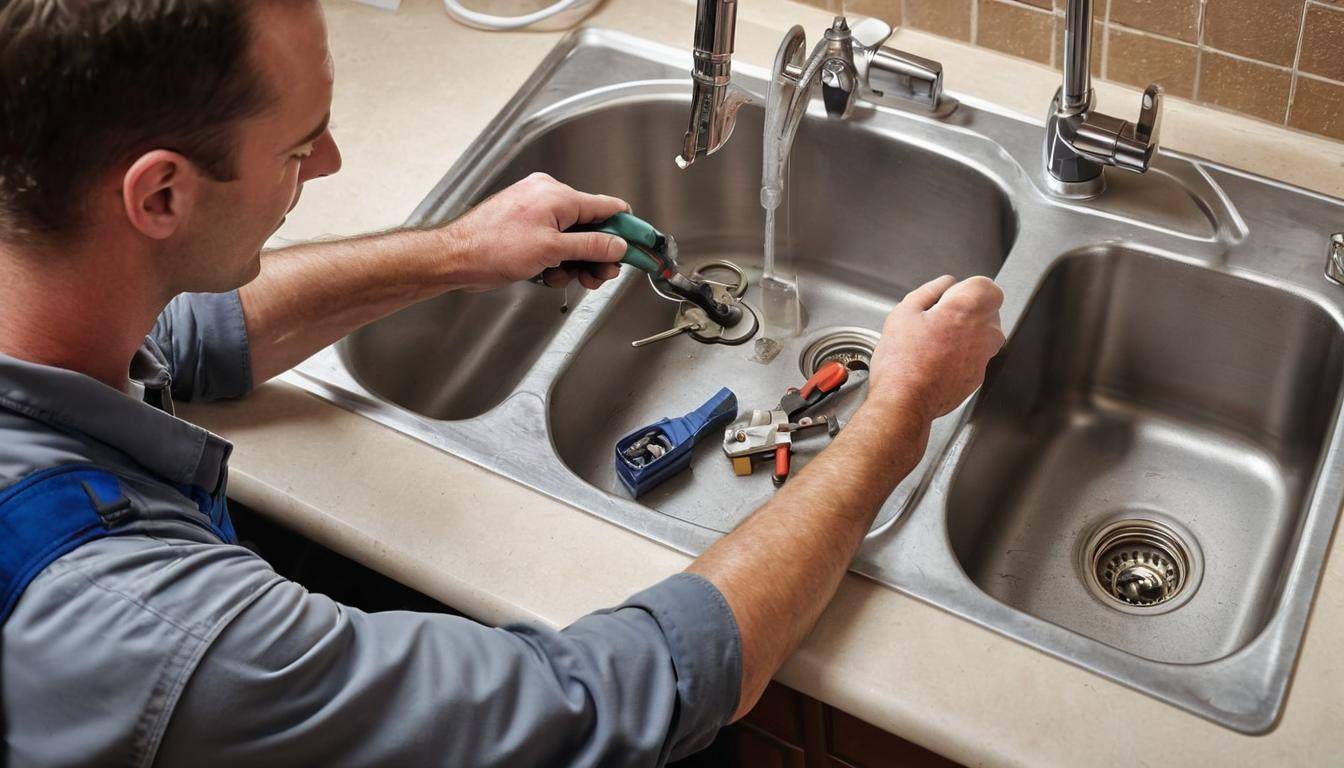
While it’s empowering to handle many household repairs on our own, there are situations that signal it’s time to reach out to a professional plumber. Persistently slow-draining sinks are not only frustrating but can be indicative of more serious issues like tree root invasion in the pipes or even a collapsed section of the pipe. These are problems that often necessitate advanced tools and expertise to rectify.
If you notice nasty sewage smells wafting up from your drains or have multiple fixtures throughout your home draining slowly, it could be an indication of a bigger issue with your plumbing system that demands urgent attention. Water damage surrounding the sink area, such as bubbling paint or spongy drywall, are also warning signs that should not be taken lightly.
These red flags signal that it’s time to bring in professional assistance. Plumbing problems like these often require a more comprehensive evaluation and solution provided by experienced professionals.
So, if you’ve encountered any of these warning signs with your slow-draining kitchen sink, don’t hesitate to contact the experts at My Calgary Plumber for a thorough assessment and reliable solutions. Their skilled team is equipped to handle a wide range of plumbing issues and will ensure that your kitchen sink is back to running smoothly in no time.
In preventing repeat occurrences and ensuring seamless functionality of your drains, implementing preventive measures is pivotal. Now we’re moving into aspects that can help keep your kitchen sink in top-notch condition.
Tips for Preventing Future Clogs
So, you’ve dealt with a slow-draining kitchen sink and now you want to prevent it from happening again. Thinking ahead is key! Here are some simple yet effective steps that you can take to keep your kitchen sink flowing freely and avoid future headaches.
Run Hot Water After Each Use: After each use of the sink, let the hot water run for a little while. This helps clear out any leftover grease or debris that might be hanging around. Just imagine it as giving your pipes a little rinse, like cleaning up dishes after cooking a delicious meal. It’s a simple step, but it can prevent materials from solidifying and clogging your pipes.
Avoid Grease Disposal: Remember, never pour grease or fat down the drain. Instead, put them in a designated container and dispose of them properly. Grease tends to solidify as it cools, which can lead to stubborn clogs over time. Consider it like taking out the trash—placing it where it belongs keeps things clean and running smoothly.
Use a Mesh Strainer: The mesh strainer is a kitchen sink’s unsung hero. A small investment in one of these handy devices can save you from significant trouble down the road by catching food particles before they enter the drain. Think of it as putting on an apron before starting to cook—it saves your clothes from getting dirty!
A mesh strainer can catch bits of food and other gunk that would otherwise bring about blockages in the pipes. It’s an easy way to stop potential issues right at the source, without affecting your daily routine.
Monthly Cleaning: Just like how we clean our sinks regularly now, consider using a natural cleaning solution once a month to keep your pipes clear of buildup. For instance, you can use the previously mentioned baking soda and vinegar mixture—it’s economical and eco-friendly.
Pouring this mixture down your drain can help loosen any gunk clinging to your pipes’ interiors. It’s like giving them a breath of fresh air—letting the baking soda fizz away buildup so you don’t have to deal with anything major later on!
By incorporating these preventive measures into your kitchen sink maintenance routine, you’re significantly reducing the risk of experiencing a slow-draining sink. Remember, little actions like these add up and contribute to hassle-free experiences in the long run.


